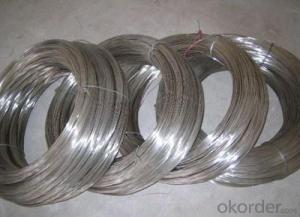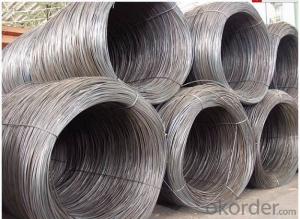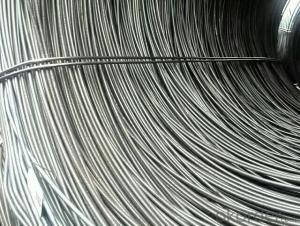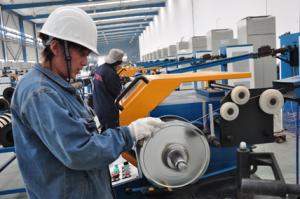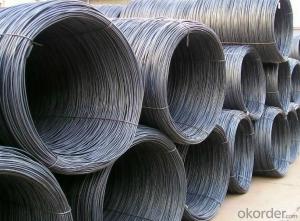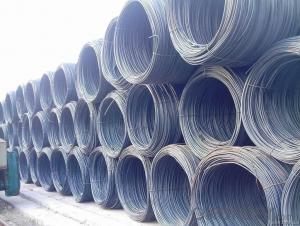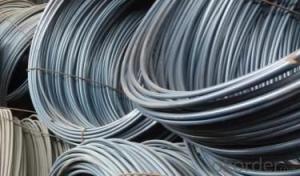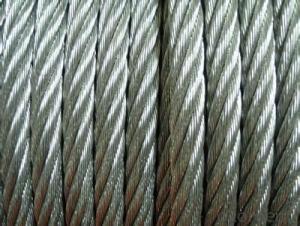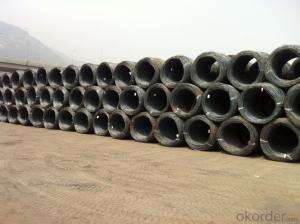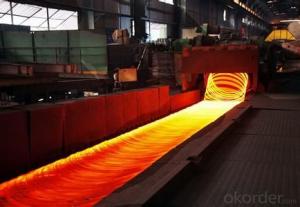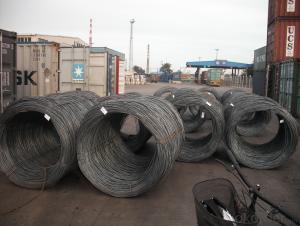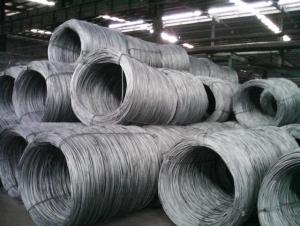stainless steel wire 304 with high quality
- Loading Port:
- Shanghai
- Payment Terms:
- TT OR LC
- Min Order Qty:
- 50 m.t.
- Supply Capability:
- 10000 m.t./month
OKorder Service Pledge
OKorder Financial Service
You Might Also Like
Quick Details
Steel Grade: 201.304.316.316L
Standard: AISI, ASTM, BS, DIN, GB, JIS
- Type: ungalvanized
Application: Construction
Alloy Or Not: Non-alloy
- Diameter range: 0.02-16mm
Standard: AISI, ASTM, DIN, GB, JIS, SUS
Packaging & Delivery
| Packaging Details: | Coils Packing, spools packing, or according to the customers' requirements |
|---|---|
| Delivery Detail: | 10-20days after confirm the order |
Specifications
Good quality stainless steel wire 304
1.Diameter range:0.15-15mm
2.Main application:making spring,mattress,wire
Good quality stainless steel wire, stainless steel wire 304
| Grade | 201.304.316.316L |
| Diameter | 0.15-15mm |
| Standard | AISI, ASTM, DIN, GB, JIS, SUS |
| Weight | According to the customers' requirements |
| Uses | To produce springs, steel wire ropes, brush and other uses |
| Packing | Coils Packing, spools packing, or according to the customers' requirement |
Terms:
1) Loading Port: Shanghai
2) Delivery term: FOB,CFR, CIF
3) Delivery lead time: 10 working days after received deposit.
4) Payment term:30% by T/T as deposit., balance will be paid by T/T before loading,
5) Quality assurance: Mill Test Certificate is supplied with shipment, third Party Inspection is acceptable.
- Q: Can steel wire rod be used for welding applications?
- Yes, steel wire rod can be used for welding applications. Steel wire rods are commonly used as a filler material in welding processes. They are typically made from low carbon steel and are available in various sizes and grades to meet specific welding requirements. Steel wire rods can be used for welding applications such as arc welding, MIG welding, TIG welding, and spot welding. They provide a strong and reliable weld when used correctly. However, it is important to select the appropriate wire rod based on the type of metal being welded and the specific welding process being used.
- Q: How are surface defects in steel wire rod repaired or rectified?
- Various methods can be used to repair or rectify surface defects in steel wire rods. One commonly employed technique is grinding or sanding, where abrasive materials or tools are utilized to remove the surface defect, resulting in a smooth and even finish. Another approach involves peeling, which entails using a peeling machine to eliminate a thin layer from the affected area. This helps eliminate superficial defects like scale or oxidation and enhances the overall quality of the wire rod. In certain cases, the defects may be too severe to be addressed solely through grinding or peeling. In such situations, pickling or acid cleaning can be employed. This process involves immersing the rod in an acidic solution to remove corrosion, scale, or other surface defects. The wire rod is then thoroughly rinsed and dried to prevent further damage. Electropolishing is yet another technique used to repair surface defects in steel wire rods. This method requires immersing the rod in an electrolyte solution and applying an electric current. By doing so, a controlled amount of material is removed from the surface, effectively eliminating any defects and producing a smooth and polished finish. In addition to mechanical and chemical methods, heat treatment processes can also be utilized to repair surface defects in steel wire rods. For instance, annealing involves heating the wire rod to a specific temperature and gradually cooling it down. This process helps alleviate internal stresses and improve the overall structure and surface quality of the rod. In summary, repairing or rectifying surface defects in steel wire rods necessitates a combination of techniques, depending on the severity and type of defect. Employing these methods enables manufacturers to ensure that the wire rods meet the required quality standards and are suitable for their intended applications.
- Q: What are the main factors affecting the market communication of steel wire rod?
- The main factors affecting the market communication of steel wire rod include the overall demand and supply dynamics in the steel industry, price fluctuations, technological advancements, competition from alternative materials, government regulations, and the influence of key stakeholders such as manufacturers, distributors, and end-users. Additionally, market communication can be impacted by economic conditions, global trade policies, consumer preferences, and environmental sustainability initiatives.
- Q: What are the typical dimensions of steel wire rod?
- The typical dimensions of steel wire rod vary depending on the specific application and industry. However, common dimensions range from 5.5mm to 16mm in diameter.
- Q: What are the specifications for steel wire rod?
- The specifications for steel wire rod typically include the chemical composition, mechanical properties, dimensions (diameter and length), surface finish, and any additional requirements such as tolerance levels or specific certifications. These specifications are important for ensuring the quality and suitability of the steel wire rod for various applications, including construction, automotive, and manufacturing industries.
- Q: How is steel wire rod straightened after the rolling process?
- Steel wire rod, after the rolling process, typically does not have a perfect straightness. To rectify this, there are multiple methods that can be utilized. One commonly used method is known as the straightening process, which includes passing the wire rod through a sequence of straightening rolls or dies. The initial set of rolls, through which the wire rod is fed, is usually inclined at an angle. As the rod passes through these rolls, it is bent in the opposite direction of its original curvature. The angle of the rolls is adjusted accordingly to gradually straighten the rod. This process is repeated with multiple sets of rolls, each set slightly altering the angle to further straighten the wire rod. Another method employed for straightening steel wire rod is the rotary straightening process. In this method, the wire rod is guided through a series of rotating straightening rolls. These rolls are often positioned at various angles to effectively straighten the rod. As the rod moves through the rolls, it undergoes bending forces that counteract its initial curvature, resulting in a straightened wire rod. Furthermore, there exist specialized machines and equipment designed specifically for straightening steel wire rod. These machines employ different mechanisms, such as hydraulic or mechanical systems, to apply controlled bending forces to the rod and straighten it. Overall, the process of straightening steel wire rod involves the application of controlled bending forces through sets of rolls or specialized machines. This gradual process serves to eliminate any curvature, resulting in a straightened wire rod that meets the necessary specifications.
- Q: What are the main factors influencing the choice of steel wire rod order packaging marking options?
- The main factors influencing the choice of steel wire rod order packaging marking options include the specific requirements and regulations of the industry, the destination and transportation method of the order, the need for traceability and quality control, and any customer-specific preferences or branding requirements.
- Q: How is steel wire rod used in the manufacturing of wire for electrical heating cables?
- Steel wire rod is an essential component in the manufacturing process of wire for electrical heating cables. The wire rod serves as the primary raw material that undergoes various treatments and transformations to produce the final electrical heating cable wire. To begin with, the steel wire rod is typically made from low-carbon steel, which possesses excellent electrical conductivity and heat resistance properties. This makes it an ideal material for electrical heating cables, as it can efficiently conduct electricity and withstand the high temperatures generated by the cables. The first step in the manufacturing process involves hot rolling the steel wire rod into a thin strip, which is then cold drawn to achieve the desired wire diameter. This cold drawing process imparts high tensile strength and flexibility to the wire, ensuring it can withstand the stress and strain associated with various applications. Once the wire is formed, it is then subject to a series of heat treatments to enhance its electrical conductivity and heat resistance. This may involve annealing, where the wire is heated and slowly cooled to relieve internal stresses and improve its ductility. Additionally, the wire may be subjected to a process called galvanization, which involves coating the wire with a protective layer of zinc to enhance its corrosion resistance. After the heat treatments, the wire is further processed to achieve the required specifications for electrical heating cables. This may involve additional drawing processes to achieve the desired diameter and surface finish. The wire is then wound onto spools or coils, ready to be used in the manufacturing of electrical heating cables. In the final stage of the manufacturing process, the steel wire is incorporated into the construction of electrical heating cables. This typically involves combining the wire with other materials, such as insulation and protective sheathing, to ensure the safety and functionality of the cables. Overall, steel wire rods play a crucial role in the manufacturing of wire for electrical heating cables. Its excellent electrical conductivity, heat resistance, and strength make it an ideal material for this application. Through various treatments and processes, the steel wire rod is transformed into a high-quality wire that can efficiently conduct electricity and withstand the demanding conditions of electrical heating systems.
- Q: How is steel wire rod used in the manufacturing of fencing?
- Steel wire rod is commonly used in the manufacturing of fencing as it serves as the primary material for creating the wire mesh used in fencing panels. The wire rod is first drawn through various dies to obtain the desired thickness and shape, and then it is galvanized or coated to enhance its durability and resistance to corrosion. The resulting wire mesh is then woven or welded together to form the structure of the fence, providing strength, security, and longevity to the overall fencing system.
- Q: What are the advantages of using steel wire rod in construction?
- There are several advantages of using steel wire rod in construction. Firstly, steel wire rod is known for its high strength and durability, making it ideal for supporting heavy loads and withstanding extreme weather conditions. This ensures the longevity and safety of the construction project. Additionally, steel wire rod is highly flexible and can be easily shaped and bent to fit various construction needs, allowing for versatile and efficient design possibilities. Moreover, steel wire rod is resistant to corrosion, which reduces maintenance costs and increases the lifespan of the construction. Lastly, steel wire rod is a sustainable and recyclable material, making it an environmentally-friendly choice for construction projects.
Send your message to us
stainless steel wire 304 with high quality
- Loading Port:
- Shanghai
- Payment Terms:
- TT OR LC
- Min Order Qty:
- 50 m.t.
- Supply Capability:
- 10000 m.t./month
OKorder Service Pledge
OKorder Financial Service
Similar products
Hot products
Hot Searches
Related keywords
